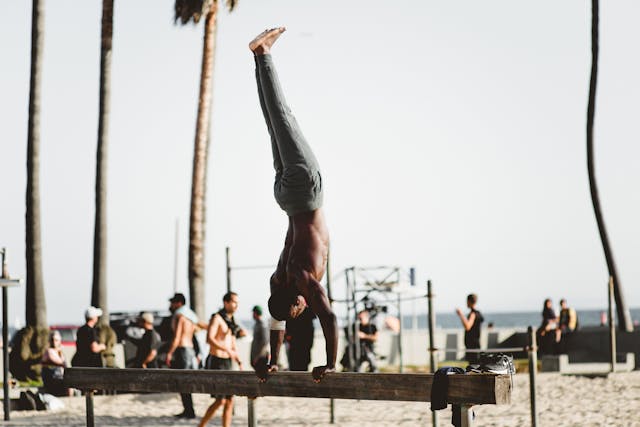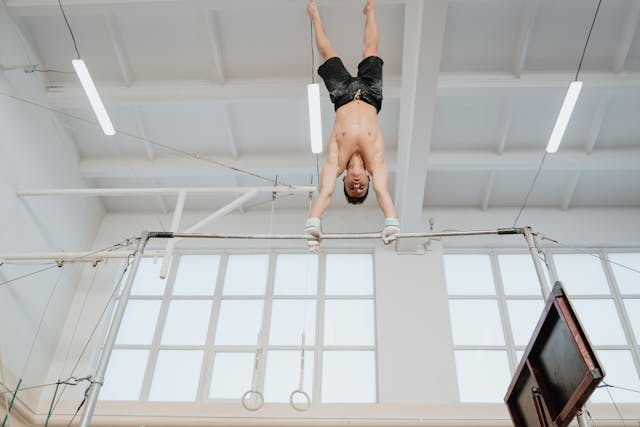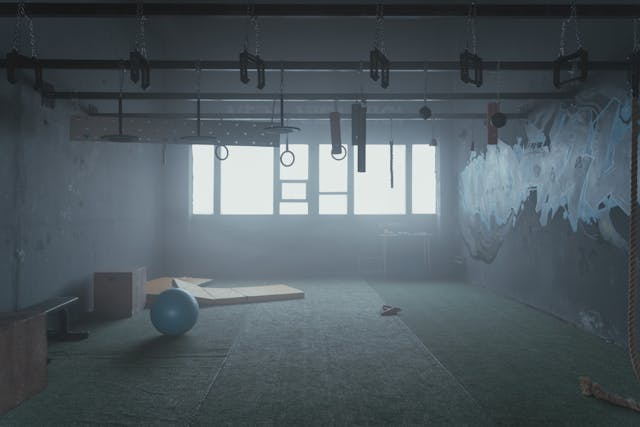Dive into the workout of calisthenics. We answer the question of what is calisthenics.
Table of Content:
Calisthenics
In fitness, many people think of gyms filled with weights, treadmills, and machines. However, there’s a powerful alternative to traditional weight training that requires nothing more than your own body: calisthenics. A form of exercise based entirely on bodyweight movements, calisthenics has surged in popularity due to its simplicity, versatility, and effectiveness in building strength, flexibility, and endurance.
Calisthenics is more than just a workout; it’s a functional training method that can help you achieve a balanced, strong, and flexible body without needing expensive equipment or a gym. Whether you’re a beginner looking to build basic fitness or an advanced athlete seeking new challenges, calisthenics offers something for everyone. With its accessibility, versatility, and proven results, it’s no wonder that calisthenics has become a go-to workout routine for people all over the world.
So let’s dive into it.
What is Calisthenics?
Calisthenics refers to a set of exercises that rely solely on the individual’s body weight as resistance. Unlike lifting weights or using gym machines, calisthenics uses the natural movements of the human body to promote overall fitness. The core concept is that you don’t need expensive equipment or a gym membership to achieve a strong, balanced, and functional body. Exercises like push-ups, pull-ups, squats, and planks are the building blocks of a calisthenics routine, and they can be done almost anywhere—whether it’s in your living room, a park, or even a hotel room while traveling.

Key Components of Calisthenics
The beauty of calisthenics lies in its simplicity, yet it offers a wide range of movements that target different muscle groups. Let’s explore some of the most common exercises in calisthenics.
- Push-ups: One of the most well-known bodyweight exercises, push-ups engage the chest, shoulders, triceps, and even the core. They can be modified in various ways, such as wide-grip push-ups for targeting the chest or diamond push-ups for the triceps.
- Pull-ups/Chin-ups: These exercises are excellent for strengthening the back and biceps. Pull-ups target the upper back and shoulders, while chin-ups put more emphasis on the biceps. They are great for developing upper body pulling strength.
- Squats: Squats are a staple lower body exercise that engages the quadriceps, hamstrings, and glutes. Variations such as pistol squats (single-leg squats) increase the difficulty and balance challenge.
- Dips: By using parallel bars or a chair, dips focus on strengthening the triceps, shoulders, and chest. They are particularly useful for developing upper body pushing power.
- Planks: Planks are a simple yet effective way to build core strength and stability. They work the abdominals, lower back, and shoulders, contributing to overall posture and balance.
- Leg Raises: A fantastic core workout, leg raises target the lower abs and hip flexors. Hanging leg raises add a level of difficulty by involving the entire body.
- Lunges: These develop balance, coordination, and leg strength. Lunges are an excellent functional movement because they mimic real-life actions like walking or climbing stairs.
- Burpees: For those looking to combine strength and cardio, burpees are the go-to exercise. This full-body movement increases heart rate while also working the chest, shoulders, legs, and core.

Benefits of Calisthenics
Calisthenics offers a range of benefits that make it ideal for people of all fitness levels, from beginners to seasoned athletes.
1. Improves Overall Body Control and Coordination
Calisthenics forces you to become more aware of how your body moves in space. Since these exercises are often compound movements—meaning they involve multiple joints and muscle groups—you develop better balance and coordination. This type of control translates into functional strength, which is the ability to perform everyday tasks more efficiently and with less risk of injury.
2. Increases Strength Without Weights
One of the misconceptions about calisthenics is that you can’t build muscle or strength without lifting heavy weights. However, many calisthenics exercises are highly effective for muscle development. Movements like push-ups, pull-ups, and dips progressively overload the muscles, leading to growth. Advanced variations, such as handstand push-ups or muscle-ups, require significant strength and can be as challenging as lifting heavy weights.
3. Enhances Flexibility and Mobility
Many calisthenics movements involve a full range of motion, which helps improve flexibility and joint mobility. For example, deep squats work not only the leg muscles but also the hip flexors and glutes, improving hip flexibility. Movements that require stretching and stabilizing muscles—like lunges and planks—can also enhance overall mobility, making you more agile and less prone to injury.
4. Builds Endurance and Cardiovascular Health
Although calisthenics primarily focuses on strength, it can also be an excellent cardiovascular workout. Exercises like burpees, jumping jacks, and high knees are staples of calisthenics routines that increase heart rate and improve cardiovascular endurance. By incorporating high-intensity interval training (HIIT) with calisthenics, you can create a well-rounded fitness program that boosts both muscular endurance and heart health.
5. Can Be Done Anywhere
One of the most significant advantages of calisthenics is its convenience. Since it requires no equipment, you can perform these exercises almost anywhere. Whether you’re at home, in a park, or on vacation, your workout routine doesn’t have to be compromised. This makes calisthenics perfect for people who are constantly on the go or don’t have access to a gym.

Advanced Calisthenics (Taking It to the Next Level)
For those looking to push their limits, calisthenics offers an endless range of advanced exercises that challenge even the most experienced athletes.
- Muscle-ups: A combination of a pull-up and a dip, muscle-ups require explosive pulling power and strong triceps to push yourself above the bar.
- Handstand Push-ups: These develop incredible shoulder strength and balance, requiring you to maintain an inverted position while pressing your body upward.
- Levers: Front and back levers are gymnastic-inspired moves that involve holding your body parallel to the ground while hanging from a bar, demanding incredible core and upper body strength.
Mastering these exercises not only builds strength but also enhances your body control and coordination to new heights.
Getting Started with Calisthenics
If you’re new to calisthenics, it’s essential to start with basic exercises and gradually increase intensity as you become stronger. Focus on mastering proper form to prevent injury and ensure that you’re working the right muscles. As you progress, you can add variations or increase the difficulty by manipulating factors like leverage, speed, or repetitions.
The following is a simple beginner calisthenics routine to try.
- Push-ups: 3 sets of 10-15 reps
- Pull-ups (or assisted pull-ups): 3 sets of 5-8 reps
- Bodyweight squats: 3 sets of 15-20 reps
- Planks: Hold for 30-60 seconds
- Lunges: 3 sets of 10 reps per leg


